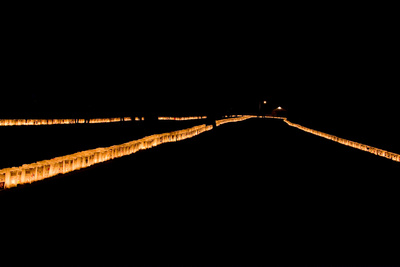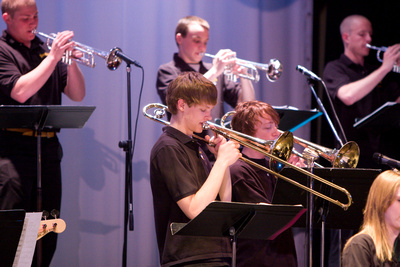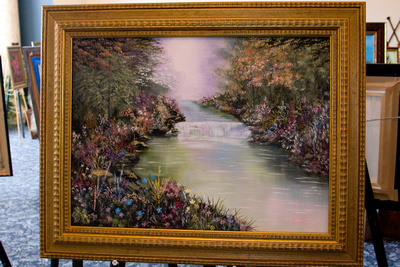I finally got to test out my newest gear in the environment that I’d spec’d it out for… a dark night club with a live band. And I am happy to say that I was very pleased with the results. The camera was a Canon 7D which is one of the latest hybrid digital SLRs that can record full 1080p in a variety of frame rates. The higher ISO settings of these latest cameras means we are now able to get video in conditions previously impossible with a consumer level camcorder. And the quality of the latest Canon hybrid DSLRs is even up to broadcast levels as was evident when the season finale of House was shot entirely on the 7D’s big brother the Canon 5D mark II.
Take a look at the video below and see what you think. Watch in 720p for the best quality. Full screen is nice also, but it still is not up to the quality of the original file at 1080p. YouTube turns any HD video you upload into 720p and appears to have lowered the bitrate as well. It’s quite good, but lacking the little extra crispness that is present in the source file.
The quality you are seeing on your computer is unfortunately dependent on YouTube’s limitations. Actually, that’s not completely true either. YouTube has found a pretty good way to provide high quality HD content to most computers. In fact if I could provide the actual 1080p video there would be very few computers that would be able to play it because of the graphics demand it places on a computer.
As you can tell I was impressed with what I saw on my 15″ MacBook Pro display, but what would happen if I plugged my 50″ Panasonic plasma into my mac? Surely I would see something disappointing after all this isn’t a $10,000 broadcast level camera it’s a sub $2000 digital SLR. Well to my surprise it was unbelievable. Definitely high quality HD at 1080p. It was like watching an HD broadcast of The Raven Congress on Austin City Limits albeit a lot more personal.
So now that you have heard all the pluses are there any minuses? Well there are a few. Shooting video with a hybrid digital SLR has it’s own set of challenges such as manual focus and holding the camera steady. The sample video here is by no means a masterpiece, but it illustrates what can be done with this equipment. The larger sensors of a DSLR means a shallow depth of field look can be achieved which is great for interviews where you can blur out the background so it is not a distraction. In the case of a live band in a dark nightclub the shallow depth of field can be a curse as well as a godsend as you try to keep focus on the subject while moving around. Do it right and it’s very cool. Miss focus and it’s not so cool. By the end of the evening I was starting to get the hang of it, but I still need lots of practice. I also found that a lighter prime lens was easier to use than a heavier zoom. The inability to zoom also meant I was able to just concentrate on focus. The toughest part was moving closer or farther from the subject and adjusting the focus to keep the subject sharp. Very rarely did I get lucky and nail it, but it also added a bit of a live, raw feel as well which I felt was a bit unique.
So what about the audio? Don’t count on the camera if you want decent audio. My goal here was to get better than average audio because the whole point behind this was to capture a musical performance. Having good video quality is great, but when paired with average sound it doesn’t cut it. So to improve on that I used a Zoom H4N digital audio recorder. The Zoom has built-in stereo mics that are properly positioned to avoid phase cancellation. They really do work well. For this video I set the H4N on a light stand so I could position it about 7 feet in the air. It did work rather well unless there were people standing directly beneath it trying to talk over the music. It has 2 direct inputs on it as well so if there is a good feed from a mixer you could use that instead.
The other advantage to having a mic that is stationary is that the sound remains consistent. If I used a camera mounted mic the sound that was recorded would change drastically as I moved around the room. I only used the camera’s audio so I had something to sync the Zoom audio track to during post production. What you hear in the video is audio from the Zoom only. I did add some compression and equalization to the audio during post, but the Zoom really did provide some quality audio to work with.
So all in all I was quite pleased with the results especially for a first time out. With a package this small it’s not near as intimidating as a shoulder mounted video camera, but on the other hand it’s also not obvious that you are shooting video. Unfortunately for me, some of the fans that evening thought I was just an inconsiderate photographer who liked obscuring their view of the band. In hindsight maybe we should have announced that we were capturing video footage that the fans could enjoy from the comfort of their homes. Oh well. Lessons learned.
See Photos of The Raven Congress performance.



